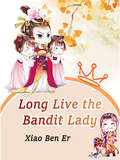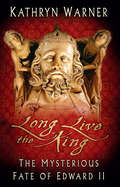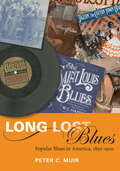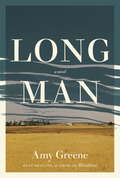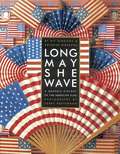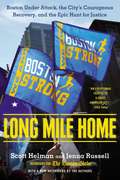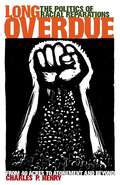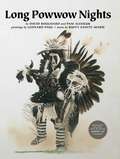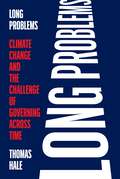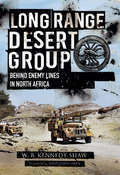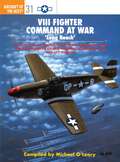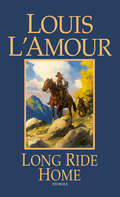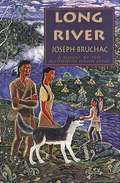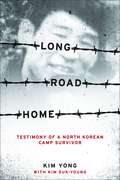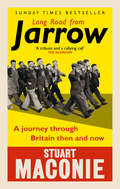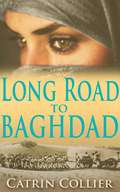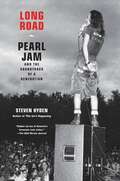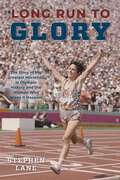- Table View
- List View
Long Live the Bandit Lady: Volume 1 (Volume 1 #1)
by Xiao BenEr"My aunt is living her own life. With an old man supporting her, what do I have to be afraid of?!" After waking up, she came to ancient times and became the young master of a village. There was one more bandit father who was protecting her, and another group of brothers.The first time he had met her in a bandit operation, he had been assaulted by the stench. Inwardly unconvinced, he had stolen her from the bandit's den at night.Shameless!She wanted to return to her father's side and teach him a lesson, but she didn't expect to be sent to the bridal chamber with him after coming back. She was teased over and over again by him."Xiao Shiyu!" "Aunt, I'm going to divorce you!"
Long Live the Bandit Lady: Volume 2 (Volume 2 #2)
by Xiao BenEr"My aunt is living her own life. With an old man supporting her, what do I have to be afraid of?!" After waking up, she came to ancient times and became the young master of a village. There was one more bandit father who was protecting her, and another group of brothers.The first time he had met her in a bandit operation, he had been assaulted by the stench. Inwardly unconvinced, he had stolen her from the bandit's den at night.Shameless!She wanted to return to her father's side and teach him a lesson, but she didn't expect to be sent to the bridal chamber with him after coming back. She was teased over and over again by him."Xiao Shiyu!" "Aunt, I'm going to divorce you!"
Long Live the Bandit Lady: Volume 3 (Volume 3 #3)
by Xiao BenEr"My aunt is living her own life. With an old man supporting her, what do I have to be afraid of?!" After waking up, she came to ancient times and became the young master of a village. There was one more bandit father who was protecting her, and another group of brothers.The first time he had met her in a bandit operation, he had been assaulted by the stench. Inwardly unconvinced, he had stolen her from the bandit's den at night.Shameless!She wanted to return to her father's side and teach him a lesson, but she didn't expect to be sent to the bridal chamber with him after coming back. She was teased over and over again by him."Xiao Shiyu!" "Aunt, I'm going to divorce you!"
Long Live the Bandit Lady: Volume 4 (Volume 4 #4)
by Xiao BenEr"My aunt is living her own life. With an old man supporting her, what do I have to be afraid of?!" After waking up, she came to ancient times and became the young master of a village. There was one more bandit father who was protecting her, and another group of brothers.The first time he had met her in a bandit operation, he had been assaulted by the stench. Inwardly unconvinced, he had stolen her from the bandit's den at night.Shameless!She wanted to return to her father's side and teach him a lesson, but she didn't expect to be sent to the bridal chamber with him after coming back. She was teased over and over again by him."Xiao Shiyu!" "Aunt, I'm going to divorce you!"
Long Live the Bandit Lady: Volume 5 (Volume 5 #5)
by Xiao BenEr"My aunt is living her own life. With an old man supporting her, what do I have to be afraid of?!" After waking up, she came to ancient times and became the young master of a village. There was one more bandit father who was protecting her, and another group of brothers.The first time he had met her in a bandit operation, he had been assaulted by the stench. Inwardly unconvinced, he had stolen her from the bandit's den at night.Shameless!She wanted to return to her father's side and teach him a lesson, but she didn't expect to be sent to the bridal chamber with him after coming back. She was teased over and over again by him."Xiao Shiyu!" "Aunt, I'm going to divorce you!"
Long Live the Bandit Lady: Volume 6 (Volume 6 #6)
by Xiao BenEr"My aunt is living her own life. With an old man supporting her, what do I have to be afraid of?!" After waking up, she came to ancient times and became the young master of a village. There was one more bandit father who was protecting her, and another group of brothers.The first time he had met her in a bandit operation, he had been assaulted by the stench. Inwardly unconvinced, he had stolen her from the bandit's den at night.Shameless!She wanted to return to her father's side and teach him a lesson, but she didn't expect to be sent to the bridal chamber with him after coming back. She was teased over and over again by him."Xiao Shiyu!" "Aunt, I'm going to divorce you!"
Long Live the Bandit Lady: Volume 7 (Volume 7 #7)
by Xiao BenEr"My aunt is living her own life. With an old man supporting her, what do I have to be afraid of?!" After waking up, she came to ancient times and became the young master of a village. There was one more bandit father who was protecting her, and another group of brothers.The first time he had met her in a bandit operation, he had been assaulted by the stench. Inwardly unconvinced, he had stolen her from the bandit's den at night.Shameless!She wanted to return to her father's side and teach him a lesson, but she didn't expect to be sent to the bridal chamber with him after coming back. She was teased over and over again by him."Xiao Shiyu!" "Aunt, I'm going to divorce you!"
Long Live the King: The Mysterious Fate of Edward II
by Kathryn WarnerEdward II’s murder at Berkeley Castle in 1327 is one of the most famous and lurid tales in all of English history. But is it true? For over five centuries, few people questioned it, but with the discovery in a Montpellier archive of a remarkable document, an alternative narrative has presented itself: that Edward escaped from Berkeley Castle and made his way to an Italian hermitage.In Long Live the King, medieval historian Kathryn Warner explores in detail Edward’s downfall and forced abdication in 1326/27, the role possibly played by his wife Isabella of France, the wide variation in chronicle accounts of his murder at Berkeley Castle and the fascinating possibility that Edward lived on in Italy for many years after his official funeral was held in Gloucester in December 1327.
Long Lost Blues: Popular Blues in America, 1850-1920 (Music in American Life)
by Peter C. MuirMamie Smith's 1920 recording of ""Crazy Blues"" is commonly thought to signify the beginning of commercial attention to blues music and culture, but by that year more than 450 other blues titles had already appeared in sheet music and on recordings. In this examination of early popular blues, Peter C. Muir traces the genre's early history and the highly creative interplay between folk and popular forms, focusing especially on the roles W. C. Handy played in both blues music and the music business. Long Lost Blues exposes for the first time the full scope and importance of early popular blues to mainstream American culture in the early twentieth century. Closely analyzing sheet music and other print sources that have previously gone unexamined, Muir revises our understanding of the evolution and sociology of blues at its inception.
Long Man: A novel (Vintage Contemporaries)
by Amy GreeneFrom the critically acclaimed author of Bloodroot, a gripping, wondrously evocative novel of a family in turmoil, set against the backdrop of real-life historical event--the story of three days in the summer of 1936, as a government-built dam is about to flood an Appalachian town, and a little girl goes missing. A river called Long Man has coursed through East Tennessee from time immemorial, bringing sustenance to the people who farm along its banks and who trade among its small towns. But as Long Man opens, the Tennessee Valley Authority's plans to dam the river and flood the town of Yuneetah for the sake of progress--to bring electricity and jobs to the region--are about to take effect. Just a few days remain before the river will rise, and most of the town has been evacuated. Among the holdouts is a young, headstrong mother, Annie Clyde Dodson, whose ancestors have lived for generations on her mountaintop farm; she'll do anything to ensure that her three-year-old daughter, Gracie, will inherit the family's land. But her husband wants to make a fresh start in Michigan, where he's found work that will bring the family a more secure future. As the deadline looms, a storm as powerful as the emotions between them rages outside their door. Suddenly they realize that Gracie is nowhere to be found. Has the little girl simply wandered off into the rain? Or has she been taken by Amos, the mysterious drifter who has come back to Yuneetah, perhaps to save his hometown in a last, desperate act of violence? Suspenseful, visceral, gorgeously told, Long Man is a searing portrait of a tight-knit community brought together by change and crisis, and of one family facing a terrifying ticking clock. A novel set in history that resonates with our own times, it is a dazzling and unforgettable tour de force.This eBook edition includes a Reading Group Guide.
Long May She Wave: A Graphic History of the American Flag
by Kit Hinrichs Delphine Hirasuna Gerard C. WertkinFrom one of the world's leading graphic designers comes a stunning tribute to America's most enduring icon-the Stars and Stripes.The Revolutionary Congress resolved in 1777 that "the flag of the United States be 13 stripes, alternate red and white, that the Union be 13 white stars in a blue field representing a new constellation." Since that time, the American flag has been raised high in wartime triumph and peacetime celebration; burned in fervent protest; sewn lovingly onto quilts, caps, pillows, and bags; appropriated by the commercial sphere to sell goods as varied as cigars, and designer clothing, and rock-and-roll albums; and faithfully honored every 4th of July to celebrate America's independence. This collection of more than 3,000 Stars and Stripes artifacts ranges from Civil War-era banners and Native American braided moccasins to an early 20th-century "friendship" kimono and original flag art by several of the world's leading designers. In its deluxe format with over 500 illustrations, LONG MAY SHE WAVE gives wide berth to the flag in all its manifestations, and the result is a stunning visual history of America'¬?s most treasured symbol.Full-color throughout, with over 500 illustrations in a deluxe 11 x 14-inch volume-LONG MAY SHE WAVE is the perfect gift for folk-art appreciators, history buffs, and collectors.Features the 3,000-piece exhibit that was displayed at the American Institute of Graphic Arts and the San Jose Museum of Art in 2000. From toy soldiers to collectable spoons, cigar blankets to historic flags-the breadth of the collection is unrivaled.For a list of appearances by this author, check out our Calendar of Events.
Long Mile Home: Boston Under Attack, the City's Courageous Recovery, and the Epic Hunt for Justice
by Scott Helman Jenna RussellIn the tradition of 102 Minutes and Columbine, the definitive book on the Boston Marathon bombing and subsequent manhunt for the Tsarnaev brothers, written by reporters from The Boston Globe and published to coincide with the first anniversary of the tragedy.<P> <P>Long Mile Home will tell the gripping story of the tragic, surreal, and ultimately inspiring week of April 15, 2013: the preparations of the bombers; the glory of the race; the extraordinary emergency response to the explosions; the massive deployment of city, state, and federal law enforcement personnel; and the nation's and the world's emotional and humanitarian response before, during, and after the apprehension of the suspects.<P> The authors, both journalists at The Boston Globe, are backed by that paper's deep, relentless, and widely praised coverage of the event. Through the eyes of seven principal characters including the bombers, the wounded, a victim, a cop, and a doctor, Helman and Russell will trace the distinct paths that brought them together. With an unprecedented level of detail and insight, the book will offer revelations, insights, and powerful stories of heroism and humanity. <P> Long Mile Home will also highlight the bravery, resourcefulness, and resiliency of the Boston community. It will portray the city on its worst day but also at its best.
Long Overdue: The Politics of Racial Reparations
by Charles P. HenryAn investigation of America’s failure to atone for the wrongs of slaveryEver since the unfulfilled promise of “forty acres and a mule” after the Civil War, America has consistently failed to compensate Black Americans for the wrongs of slavery. Exploring why America has struggled to confront the issue of racial injustice, Long Overdue provides a history of the racial reparations movement and shows why it is more relevant now than ever.Through an examination of Americans’ unwillingness to address economic injustice, Charles P. Henry crafts a skillful moral, political, economic, and historical argument for African American reparations, focusing on successful political cases. In the wake of successes in South Africa and New Zealand, new models for reparations have found traction in a number of American cities and states, from Dallas to Baltimore and Virginia to California. By looking at other dispossessed groups—Native Americans, Holocaust survivors, and Japanese internment victims in the 1940s—Henry shows how some groups have won the fight for reparations, and explores new ways forward for Black Americans. From Hurricane Katrina to Hurricane Harvey, the events of the 21st century continue to show that the legacy of racial segregation and economic disadvantage is never far below the surface in America. As the issue of reparations is brought to the national stage by figures such as Ta-Nehisi Coates and Kamala Harris, Long Overdue provides a must-read survey of the political and legislative efforts made toward reparations over the course of American history, and offers a new path toward establishing equality for all Black Americans.
Long Powwow Nights
by David Bouchard Pam AleekukThe powwow is a time-honored Native American custom. It is a celebration of life and spirituality, a remembrance of traditions, uniting a people through dance and ritual. Long Powwow Nights takes you on a wonderful journey, honoring those who keep the traditions alive through dance and song. In poetic verse, award-winning and best-selling Métis author David Bouchard, along with Pam Aleekuk, beautifully narrate the story of a mother's dedication to her roots and her efforts to impress upon her child the importance of culture and identity. Internationally revered Mi'kmaQ artist Leonard Paul brings the story alive with his beautiful renditions of powwow dancers, warriors, and stunning landscapes. The book is accompanied by a CD, which includes music by internationally acclaimed singer and songwriter Buffy Sainte-Marie. Long Powwow Nights combines the passion and beauty of Native culture through words, paintings, and song that can be cherished by children and adults alike.
Long Problems: Climate Change and the Challenge of Governing across Time
by Thomas HalePolitical strategies for tackling climate change and other &“long problems&” that span generationsClimate change and its consequences unfold over many generations. Past emissions affect our climate today, just as our actions shape the climate of tomorrow, while the effects of global warming will last thousands of years. Yet the priorities of the present dominate our climate policy and the politics surrounding it. Even the social science that attempts to frame the problem does not theorize time effectively. In this pathbreaking book, Thomas Hale examines the politics of climate change and other &“long problems.&” He shows why we find it hard to act before a problem&’s effects are felt, why our future interests carry little weight in current debates, and why our institutions struggle to balance durability and adaptability. With long-term goals in mind, he outlines strategies for tilting the politics and policies of climate change toward better outcomes.Globalization &“widened&” political problems across national boundaries and changed our understanding of politics and governance. Hale argues that we must make a similar shift to understand the &“lengthening&” of problems across time. He describes tools and strategies that can, under certain conditions, allow policymakers to anticipate future needs and risks, make interventions that get ahead of problems, shift time horizons, adapt to changing circumstances, and set forward-looking goals that endure. As the climate changes, politics must, too. Efforts to solve long-term problems—not only climate change but other issues as well, including technology governance and demographic shifts—can also be a catalyst for a broader institutional transformation oriented toward the long term. With Long Problems, Hale offers an essential guide to governing across time.
Long Range Desert Group: Behind Enemy Lines in North Africa
by W. B. Kennedy ShawDuring the two-and-a-half years' fighting in the Western Desert of North Africa, which began with the Italian declaration of war in June 1940 and ended in 1943, the Long Range Desert Group became the acknowledged master of the vast desert. This small, highly mobile force was engaged in daring exploits and reconnaissance far behind the enemy's lines. Emerging suddenly from the depths of the desert, the LRDG would raid important airfields or attack Axis lines of communication along the Mediterranean coast, and then vanish back into the desert, to reappear hundreds of miles away. With its brilliant description of the harsh beauty of the desert, and its exiting chronicle of the LRDG activities, this book is as fascinating today as it was when was first published in 1945, after being vetted by the War Office.'Moving, exciting and authentic'The Observer'The British genius for exploration, hard living and insolently bold guerrilla warfare has never been better demonstrated than by the Long Range Desert Group [Kennedy Shaw's book is] a remarkable record, told simply, unpretentiously and with engaging humour One cannot remember a better war book.'The Manchester Guardian
Long Reach
by Michael O'LearyThis volume focuses on the little known official Army Air Force report commissioned by the Eighth Air Force's VIII Fighter Command (FC) in May 1944. The detailed document chronicled the experiences of 24 pilots who had seen extensive service in the frontline escorting B-17s and B-24s on daylight raids deep into Germany. Briefed to provide a candid report on combat flying that could be used as a teaching 'manual' for potential fighter pilots, the VIII FC veterans openly discuss their secrets to success, and survival in the deadly skies over occupied Europe. Exactly half of those pilots who contributed to The Long Reach subsequently achieved ace status.
Long Ride Home: Stories
by Louis L'AmourRIDE ALONG INTO DANGER Traveling under an alias, the last thing gunman Clip Haynes wanted was attention. But Basin City needed a town-taming marshal, and a cold-blooded murderer was hiding behind Haynes&’s real name. Now Haynes was coming out of hiding to protect his honor, save a town, and catch a killer—even if it cost him his life. Lou Morgan was as tough as they came. But it wasn&’t just the money or the challenge that motivated him to take on a suicide job involving a buried Spanish treasure and two greedy killers. It was love for a beautiful señorita who had left him for dead years ago. It&’s not easy being the new schoolma&’am in town . . . especially when you&’re a man. But Van Brady isn&’t quite the tenderfoot he seems, and before he&’s through he&’ll teach a few hard cases a lesson they&’ll never forget. From the rough-and-tumble streets of San Francisco to the dry desert plains of Texas, from a roughshod gambler willing to wager his own life on a single bet to a killer with a heart, here are stirring tales of the Old West as only Louis L&’Amour can write them, tales of men and women risking their lives, fighting their wars, and standing tall on the American frontier.
Long River: A Novel
by Joseph BruchacSet in a time and place before memory, Long River is the exciting sequel to Bruchac's acclaimed first novel, Dawn Land. In the rich and authentic tradition of his Abenaki ancestors, Bruchac continues his story of Young Hunter, the finest warrior in the village of the Only People who lived in the Northeast ten thousand years ago. An exquisite tale of friendship, courage, trust and adventure, Long River enriches the reader with a broader understanding of the life ways and highly developed value systems of native people.
Long Road Home: Testimony of a North Korean Camp Survivor
by Yong KimKim Yong shares his harrowing account of life in a labor camp-a singularly despairing form of torture carried out by the secret state. Although it is known that gulags exist in North Korea, little information is available about their organization and conduct, for prisoners rarely escape both incarceration and the country alive. Long Road Home shares the remarkable story of one such survivor, a former military official who spent six years in a gulag and experienced firsthand the brutality of an unconscionable regime. As a lieutenant colonel in the North Korean army, Kim Yong enjoyed unprecedented privilege in a society that closely monitored its citizens. He owned an imported car and drove it freely throughout the country. He also encountered corruption at all levels, whether among party officials or Japanese trade partners, and took note of the illicit benefits that were awarded to some and cruelly denied to others. When accusations of treason stripped Kim Yong of his position, the loose distinction between those who prosper and those who suffer under Kim Jong-il became painfully clear. Kim Yong was thrown into a world of violence and terror, condemned to camp No. 14 in Hamkyeong province, North Korea's most notorious labor camp. As he worked a constant shift 2,400 feet underground, daylight became Kim's new luxury; as the months wore on, he became intimately acquainted with political prisoners, subhuman camp guards, and an apocalyptic famine that killed millions. After years of meticulous planning, and with the help of old friends, Kim escaped and came to the United States via China, Mongolia, and South Korea. Presented here for the first time in its entirety, his story not only testifies to the atrocities being committed behind North Korea's wall of silence but also illuminates the daily struggle to maintain dignity and integrity in the face of unbelievable hardship. Like the work of Solzhenitsyn, this rare portrait tells a story of resilience as it reveals the dark forms of oppression, torture, and ideological terror at work in our world today.
Long Road from Jarrow: A journey through Britain then and now
by Stuart MaconieThe Sunday Times Bestseller'A tribute and a rallying call' - GuardianThree and half weeks. Three hundred miles. I saw roaring arterial highway and silent lanes, candlelit cathedrals and angry men in bad pubs. The Britain of 1936 was a land of beef paste sandwiches and drill halls. Now we are nation of vaping and nail salons, pulled pork and salted caramel.In the autumn of 1936, some 200 men from the Tyneside town of Jarrow marched 300 miles to London in protest against the destruction of their towns and industries. Precisely 80 years on, Stuart Maconie, walks from north to south retracing the route of the emblematic Jarrow Crusade. Travelling down the country’s spine, Maconie moves through a land that is, in some ways, very much the same as the England of the 30s with its political turbulence, austerity, north/south divide, food banks and of course, football mania. Yet in other ways, it is completely unrecognisable. Maconie visits the great cities as well as the sleepy hamlets, quiet lanes and roaring motorways. He meets those with stories to tell and whose voices build a funny, complex and entertaining tale of Britain, then and now.
Long Road to Baghdad
by Catrin CollierWhen Alexei Beletsky brings John Hughes news of an impending pogrom planned by Misha, a captain in the Cossack regiment, he conceals more than he tells him. Engaged to a Jewess, Ruth, Alexei is aware that Captain Misha Razin has been motivated by more than the age-old hatred of the Cossacks for the Jews. Misha is in love with Alexei's cousin Sonya, but Sonya has already given her heart to a Jew, who dare not declare his love for a Christian because he cannot bear the prospect of being shunned by his people and his religion. John, Glyn, Richard, and Alexei enlist the assistance of the local orthodox priest, Father Grigor, and the commandant of the Cossacks. They devise a plan - one which they hope will avoid a massacre. But can they dissuade Misha and save an entire community, or will blood run in the streets of the shtetl as it has done so many times before?
Long Road to Cheyenne
by Charles G. WestA DANGEROUS RIDE Cam Sutton is ready to make his name prospecting for gold in the Black Hills. But his quest for riches is interrupted when he happens upon a stagecoach holdup and ends up rescuing Mary Bishop and her two young daughters. Before striking out on his own, Cam decides to help Mary search for her husband, who disappeared while mining. Turns out Mr. Bishop was murdered-but not before finding enough gold to make Mary a very wealthy woman. Unwilling to leave them unprotected, Cam offers to help escort the ladies on the long journey back to Cheyenne. But with the threat of bandits constantly looming, and a greedy, cold-blooded killer on their trail, the road is even more treacherous than Cam anticipated. . . . .
Long Road: Pearl Jam and the Soundtrack of a Generation
by Steven HydenA leading music journalist&’s riveting chronicle of how beloved band Pearl Jam shaped the times, and how their legacy and longevity have transcended generations. Ever since Pearl Jam first blasted onto the Seattle grunge scene three decades ago with their debut album, Ten, they have sold 85M+ albums, performed for hundreds of thousands of fans around the world, and have even been inducted into the Rock and Roll Hall of Fame. In Long Road: Pearl Jam and the Soundtrack Of A Generation, music critic and journalist Steven Hyden celebrates the life, career, and music of this legendary group, widely considered to be one of the greatest American rock bands of all time. Long Road is structured like a mix tape, using 18 different Pearl Jam classics as starting points for telling a mix of personal and universal stories. Each chapter tells the tale of this great band — how they got to where they are, what drove them to greatness, and why it matters now. Much like the generation it emerged from, Pearl Jam is a mass of contradictions. They were an enormously successful mainstream rock band who felt deeply uncomfortable with the pursuit of capitalistic spoils. They were progressive activists who spoke in favor of abortion rights and against the Ticketmaster monopoly, and yet they epitomized the sound of traditional, male-dominated rock &‘n&’ roll. They were looked at as spokesmen for their generation, even though they ultimately projected profound confusion and alienation. They triumphed, and failed, in equal doses — the quintessential Gen-X tale. Impressive as their stats, accolades, and longevity may be, Hyden also argues that Pearl Jam&’s most definitive accomplishment lies in the impact their music had on Generation X as a whole. Pearl Jam&’s music helped an entire generation of listeners connect with the glory of bygone rock mythology, and made it relevant during a period in which tremendous American economic prosperity belied a darkness at the heart of American youth. More than just a chronicle of the band&’s career, this book is also a story about Gen- X itself, who like Pearl Jam came from angsty, outspoken roots and then evolved into an establishment institution, without ever fully shaking off their uncertain, outsider past. For so many Gen-Xers growing up at the time, Pearl Jam&’s music was a beacon that offered both solace and guidance. They taught an entire generation how to grow up without losing the purest and most essential parts of themselves. Written with his celebrated blend of personal memoir, criticism, and journalism, Hyden explores Pearl Jam&’s path from Ten to now. It's a chance for new fans and old fans alike to geek out over Pearl Jam minutia—the B-sides, the beloved deep cuts, the concert bootlegs—and explore the multitude of reasons why Pearl Jam&’s music resonated with so many people. As Hyden explains, &“Most songs pass through our lives and are swiftly forgotten. But Pearl Jam is forever.&”
Long Run to Glory: The Story of the Greatest Marathon in Olympic History and the Women Who Made It Happen
by Stephen LaneOn the morning of August 5, 1984, four of the greatest marathoners of all time lined up for one of the most important and long-awaited races in history. By then, they had dominated their competition for at least five years, upending a century&’s worth of preconceived notions of what marathoners could do. By decade&’s end, they had lowered the world record a total of 13 minutes, won 27 major marathon titles, and swept every Olympic and World Championship held in the 1980s. And, in their careers, only once did all four—American Joan Benoit, Norwegians Grete Waitz and Ingrid Kristiansen, and Portugal&’s Rosa Mota—square off in the same race: at the 1984 Los Angeles Olympics, in the first-ever Women&’s Olympic Marathon.Such was their talent that Benoit, the world record holder, entered the race as the underdog. She&’d had knee surgery in April, and no one, least of all Benoit herself, was certain she could hold up for 26 miles against her three rivals. Waitz, the former world record holder, was the favorite—she had destroyed the field at the 1983 World Championships and had never lost a marathon she had finished. Kristiansen, who had beaten Waitz twice in the summer of 1984 (albeit at shorter distances), was considered the fastest woman in the race: she held world records at 5,000m and 10,000m, and would break Benoit&’s marathon record in 1985. Mota had beaten Kristiansen at the 1982 European marathon championships, and was already earning a reputation for raising her level in the biggest races.This is their story, and the story of the first women&’s Olympic Marathon.
